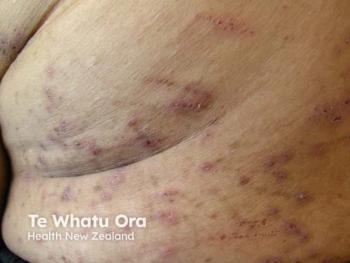
Differences in Efficacy of Platelet-Rich Plasma With Versus Without Photoactivation Minimal, According to Study in Melasma
Researchers say further studies are needed to understand the effects of photoactivation, if any, in combination with PRP.
In a comparison of platelet-rich plasma (PRP) monotherapy versus PRP combined with photoactivation in patients with melasma, researchers reported minimal differences in efficacy. Their findings were
However, researchers also identified a moderate, positive, and significant relationship between treatment with PRP and improvements in melasma.
Background and Methods
There is a great deal of PRP-related research in the melasma landscape. While relatively novel as of the past few years, several studies have already explored its effects.
A 2021
The present study, aimed at comparing PRP with versus without the addition of photoactivation, involved 38 female patients with melasma, excluding those with systemic diseases, oral contraceptive use, or who were pregnant. Participants were randomized to receive either photoactivated PRP or classical PRP treatments, with 3 intradermal sessions administered biweekly.
Findings
The participants, who were evenly split between the 2 treatment groups, had a median age of 38 years, with melasma onset typically around age 32.5 and an average disease duration of 60 months. Most patients (94.7%) presented with centrofacial melasma, while a smaller proportion (5.3%) had the malar type.
Following treatment, both PRP and photoactivated PRP were associated with significant reductions in melasma severity and improvements in quality of life. Pre-treatment assessments demonstrated a median Melasma Area and Severity Index (MASI) score of 14.5, which dropped to a median of 9 after treatment.
Similarly, the Melasma Quality of Life Index (MELASQoL) score improved from a median of 36.5 to 17. These reductions were statistically significant for both treatments.
However, there were no significant differences between PRP and photoactivated PRP in terms of pre-treatment or post-treatment MASI and MELASQoL scores. This improvement in MASI scores was observed across various types of melasma with no significant variation in treatment response based on type.
When comparing the degree of improvement, patients receiving photoactivated PRP demonstrated a higher tendency towards a 25% to 50% reduction in MASI scores compared to those treated with PRP alone. However, this difference was not statistically significant.
Furthermore, researchers observed a moderate, positive correlation between improvements in MASI scores and MELASQoL scores.
Conclusions
According to study authors Demir et al, this is the first study to assess the effects of photoactivated PRP in melasma. Future studies are warranted to better understand the relationship, if any, between PRP and photoactivation. These studies may consider addressing limitations of the present study, which include a limited sample size and limited follow-up period.
"Although there was no statistically significant difference between the efficacy of P-PRP and C-PRP, the number of patients with a 25%–50% decrease in MASI scores after treatment with P-PRP was found to be 1.7 times higher when compared to the C-PRP group," according to Demir et al. "The P-PRP application can be a novel and exciting area of research in the field of dermatology."
References
- Demir FT, Altun E. Comparison of platelet-rich plasma efficacy with and without photoactivation in melasma: a randomized double-blind study. J Cosmet Dermatol. August 23, 2024.
https://doi.org/10.1111/jocd.16540 - Zhao L, Hu M, Xiao Q, et al. Efficacy and safety of platelet-rich plasma in melasma: a systematic review and meta-analysis. Dermatol Ther (Heidelb). 2021; 11(5): 1587-1597. doi:
10.1007/s13555-021-00575-z
Newsletter
Like what you’re reading? Subscribe to Dermatology Times for weekly updates on therapies, innovations, and real-world practice tips.


















